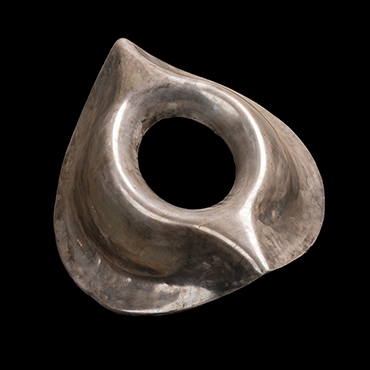A gift from Heaven
The silver casing (tawq) that surrounds the Black Stone (Hajar al-Aswad) of the Ka‘bah safeguards one of Islam’s most revered relics—a stone believed to have been sent by Allah from heaven to earth. Throughout the Islamic period, this casing has ensured the Black Stone’s secure placement on the Ka‘bah, allowing generations of believers to approach, touch, and venerate what is regarded as a tangible link to the celestial realm.
A symbol of divine grace, the Black Stone is more than a mere rock. It is a relic touched by the Prophet Muhammad (pbuh) himself, who kissed it and initiated a legacy of reverence that endures to this day. According to certain Islamic traditions, the angel Gabriel brought the stone from heaven to the Prophet Ibrahim to be placed on the Ka‘bah. Embedded into the south-eastern corner of the Ka‘bah, the Black Stone is the starting point for the tawaf, the ritual circumambulation of the Ka‘bah.
After the stone was damaged in a fire in AH 64/648 CE, Abdullah bin al-Zubair (d. AH 72–73/691–2 CE) established a tradition by securing it with a silver frame. Over the centuries, the stone—originally a single piece—suffered further fractures and fragmentation. Subsequent rulers and benefactors replaced and reinforced its casing, committed to maintaining its stability.
This frame, crafted from pure silver, was patronised by HM King Fahd bin Abdulaziz Al Saud (r. AH 1402–26/ 1982–2005 CE) as part of major restoration work on the Ka‘bah in the year 1417 AH/1996 CE.
Left:
Silver casing for the Black Stone
Likely Makkah al-Mukarramah, Saudi Arabia
AH 1417/1996 CE
Patronised by HM King Fahd bin Abdulaziz Al Saud
Silver, h. 75 x w. 77.7 cm x d. 30.5 cm
The General Authority for the Care of the Two Holy Mosques
Above:
HM King Abdulaziz kissing the Black Stone
in AH 1357/1938 CE

